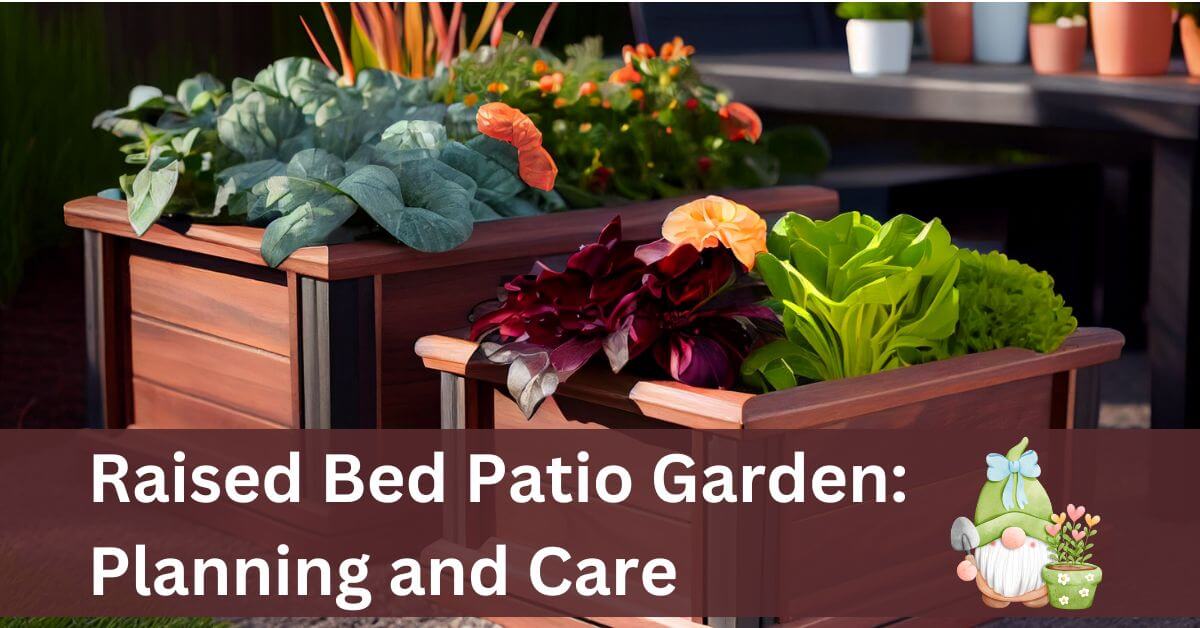
A raised bed patio garden consists of soil which is elevated from the ground and enclosed in some way. Raised beds are great because they provide better drainage, easier access for weeding, and can help create an attractive landscape feature.
Plus, they’re relatively easy to build.
Before building a raised bed, it is important to plan everything out first so that you don’t run into any problems down the road. You should decide where on your patio or balcony it will go as well as how big each enclosure will be before buying anything else.
Once all that’s done then comes the fun part: picking out plants, planting, and decorating with things like rocks or wood chips.
Planning Your Raised Bed Patio Garden
Raised bed gardens provide excellent drainage and easy access for tending.
But there is one disadvantage of raised beds that you should know about… they can be difficult to move once in place.
When setting up your raised beds, it’s important to plan out the placement carefully so that you won’t have any problems moving them later if needed.
Create a somewhat accurate sketch of your patio area and use it as a guide when deciding where each bed will go and how big each one should be.
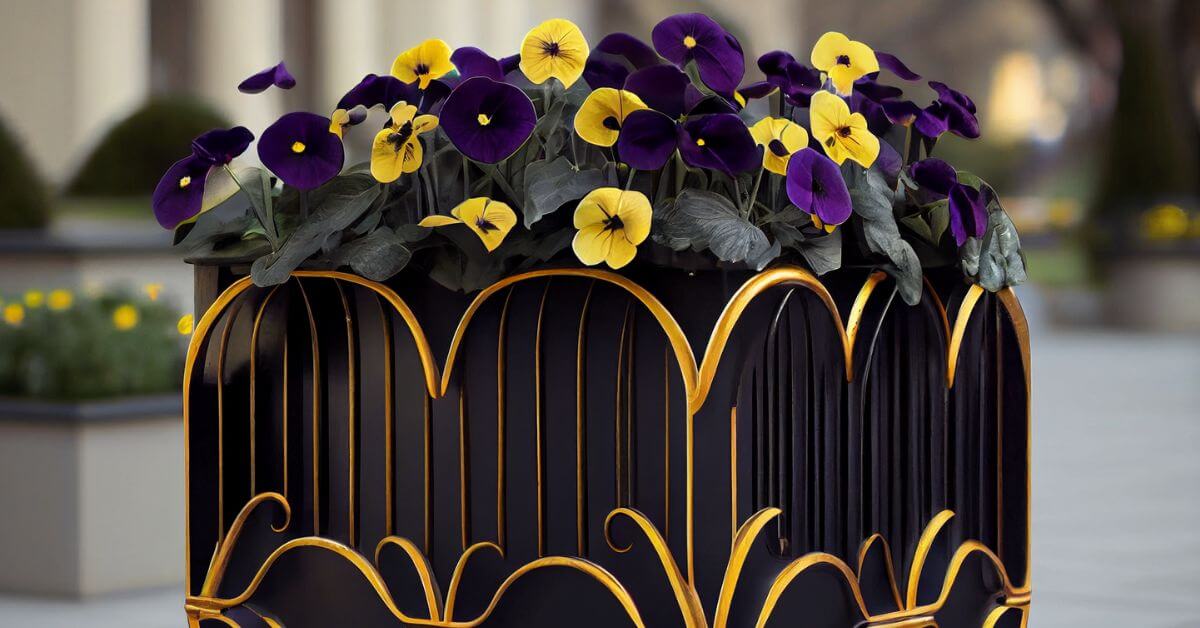
Make sure there is enough sun or shade depending on what type of plants you intend on growing, consider wind levels (too much can harm delicate plants), and think about weight distribution – don’t put all heavy beds near the same spot.
Also remember to leave some space between each bed so air can circulate properly around them all.
Don’t Overload Your Balcony
If your patio is a balcony, another important thing to keep in mind when planning out your patio garden is the weight of the items you are putting up there. Balconies can handle a certain amount of weight so it’s important that you don’t overload them.
Also, if you want to use raised beds for plants instead of containers, then make sure they aren’t too wide so that they won’t be difficult for you to reach all your plants in between them.
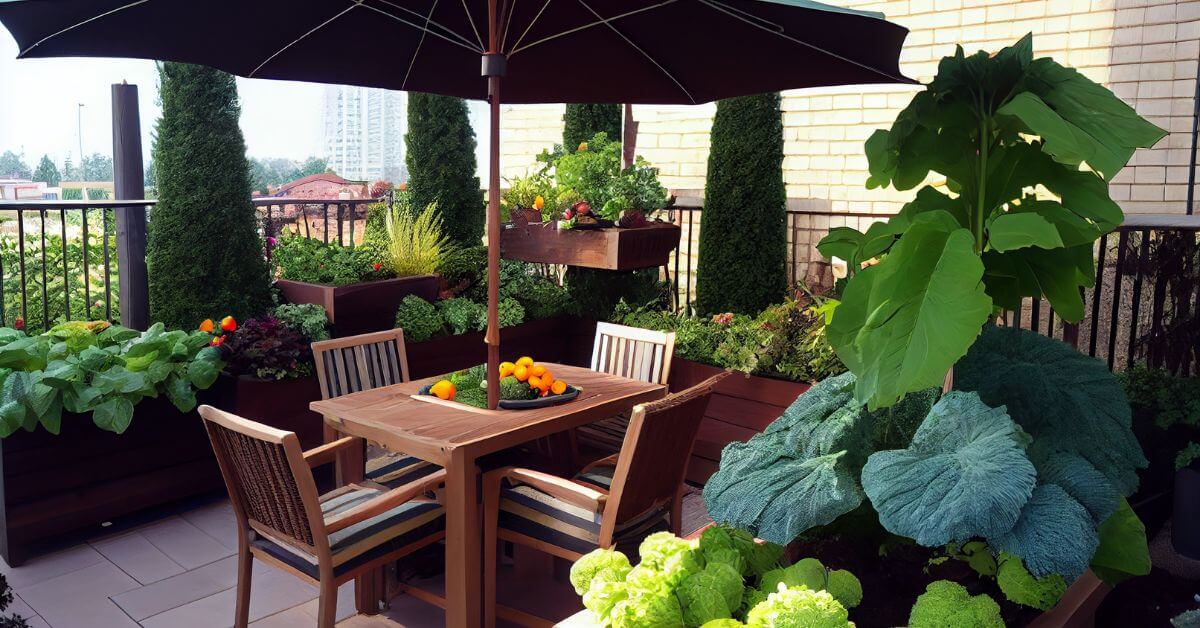
With some careful planning and consideration about how much space and what kind of materials are available this won’t be a huge concern for you.
Leave Space In Between Beds
When planning out your raised bed patio garden it’s important that you leave enough room between each plant… otherwise tending them will be difficult or next to impossible.
So, make sure there’s enough space between each one so that you can comfortably reach around them and take care of them as needed.
Layering Raised Beds Correctly
Once you have decided on your layout, it’s time to start planning what material will go into the beds first.
This step is important because if done correctly, it can help create a healthy and fertile soil for your plants.
The Hugelkultur method is one of the most popular templates for layering raised beds. It involves using logs or branches as a base layer with layers of compost and other organic matter added on top.
The idea behind this method is that over time, these materials will break down and release nutrients into the soil which helps promote plant growth.
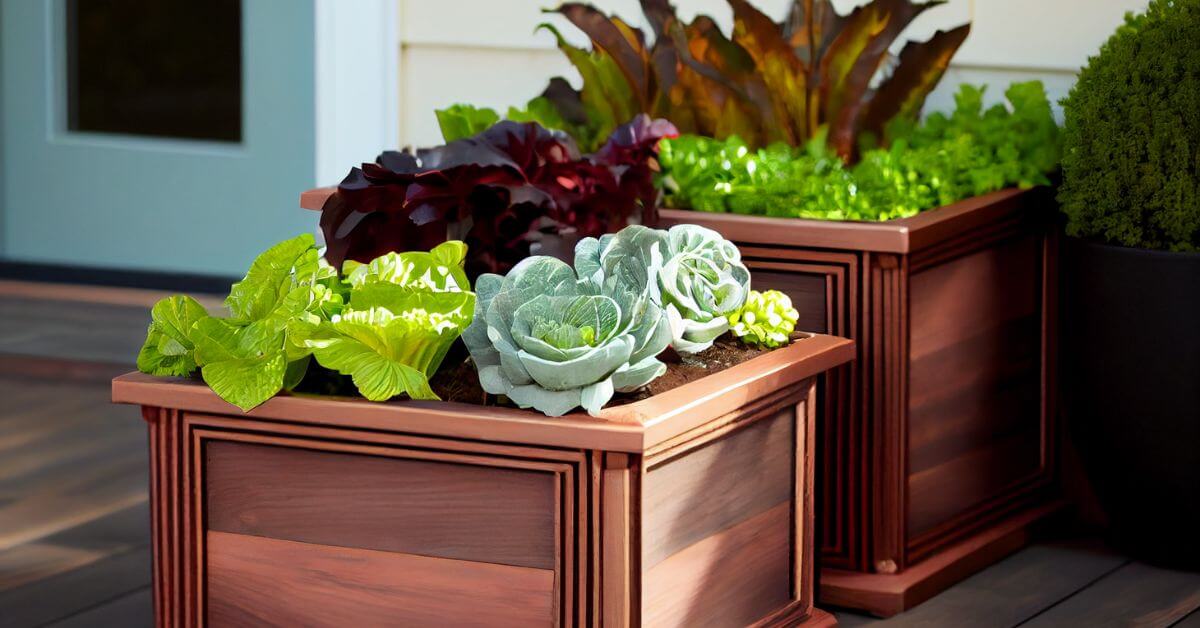
Plus, since wood takes longer to decompose than other materials like leaves or grass clippings, they provide an extra boost of nitrogen-rich fertilizer over time.
Layer 1: Dead Wood Material
This layer is made up of 40% wood chips, pine bark, twigs, old potting soil and grass cuts that can be used in your garden to help improve drainage and prevent flooding if it suddenly rains a lot. Plus, over time this deadwood will decay and provide fermentation for your plants – making them even healthier.
Layer 2: Compost
Compost is a great way for plants to stay healthy and strong. It can be made from kitchen scraps like vegetable peels, eggshells, coffee grounds or even grass clippings – all of which are natural sources of nutrients that help nourish the soil in your garden.
You can either buy compost at a gardening store or make it yourself right at home with some simple ingredients. Making compost is fun and easy – just mix together different organic materials such as leaves, grass clippings and food waste into a pile (or container).
This layer will help keep the roots warm during cold periods while providing plenty of nutrients for your plants. Plus, it’s an eco-friendly way to reduce household waste too!
Layer 3: Vegetable Garden Soil
This soil is specially formulated and bought from stores specifically for growing vegetables. Not only will it protect your plants’ roots from drought and light, but it also provides important nutrition that helps them grow big and strong.
Plus, this type of soil contains around 30% organic matter which means more nutrients are released into the soil as they break down over time. So not only do you get immediate benefits when planting with this special garden-soil mix… but also long-term ones too.
Label Your Plants
Now that you have prepped the soil, it’s time to get started on your garden by planting your seeds and seedlings. However, there is one thing that can be a bit annoying… not remembering what plants you planted after a few months.
To avoid this problem, you can keep track of what you’re planting by writing down the type of plant and where it was planted in a notebook or journal, or get labels from a gardening store that you can write on and then stick into soil next to the plants.
That way, later on, when your garden starts blooming with all sorts of beautiful plants, you will know exactly which ones are which.
Labeling is key for taking care of your plants and making sure they grow healthy and strong!
Having labels will help you identify what type of plant each one is when it starts growing. That way, if any weeds come up in between your plants, you can easily tell the difference between them and your plants and which ones need to be pulled out right away.
Plus, with labels on each plant (or even just pictures), it makes caring for them much easier since now all that’s left is tending to their needs like water and sunlight.
Caring For Your Raised Bed Plants
The moment you’ve been waiting for has arrived… raised bed plants are growing. Now that your plants have sprouted, it’s time to give them the care they need so they can thrive and grow even more beautiful.
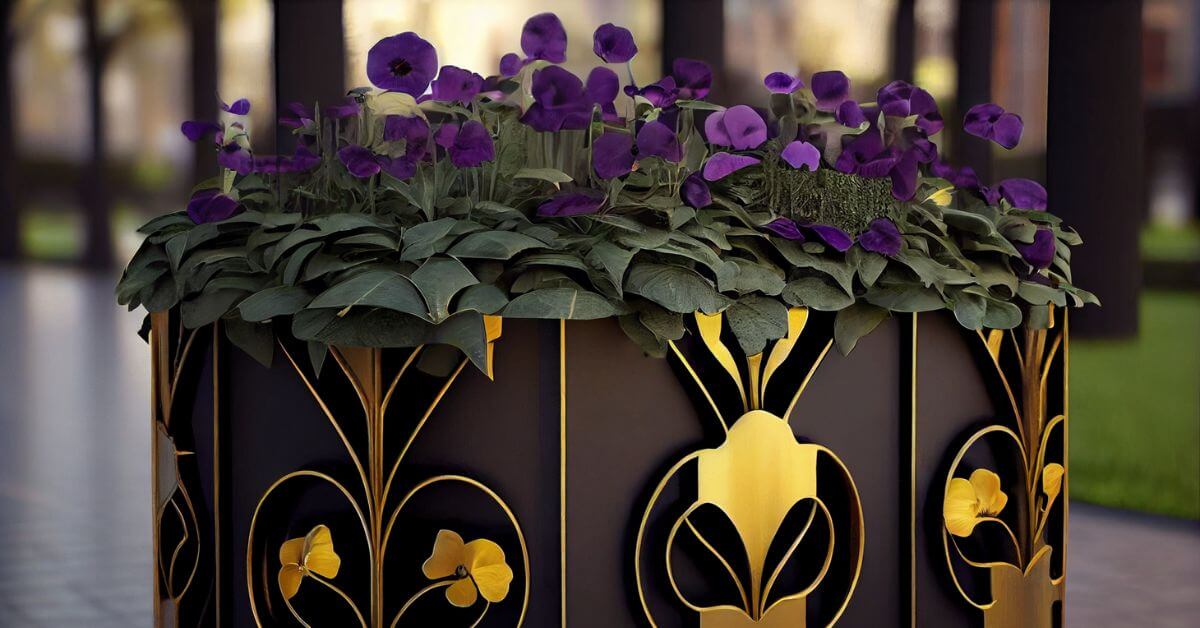
Here are a few tips on how to take good care of your bed plants:
1) Watering
Make sure you water them regularly with enough water, but not too much as this could cause root rot or other problems with the plant. Check the soil every few days and if it feels dry, then add some water until it is moist again.
2) Sunlight
Plants love sunlight so make sure yours get plenty of sun each day.
3) Fertilizing
Feeding your bed plants once per month will help promote healthy growth and blooming flowers, depending on what type you planted (check packaging instructions). Use only organic fertilizers that won’t harm any beneficial insects or animals living around such as worms which help to aerate the soil.
4) Pruning & Trimming
Depending on what you have planted it may be necessary to occasionally prune off dead leaves/stems/branches using sharp scissors/shears. This helps keep things tidy looking while allowing more nutrients & oxygen flow within leaves/stems/branches for better overall health. Pruning also encourages new leafy shoots to emerge faster.
Tools
With a classic garden you need shovels, spades, garden hoses and rakes – these are essential for digging up soil and making sure your plants have enough water.
For a raised bed patio garden there will still be tools that you need (but not as many) like small rakes and shovels, trowels, gardening gloves, and a watering can or some type of irrigation system – this will help keep everything hydrated during hot summer days so that your plants stay healthy & happy.
As well as keeping them watered regularly, over time the soil may become depleted of nutrients so be sure to amend it with compost every now & again too – this way everything should thrive nicely.
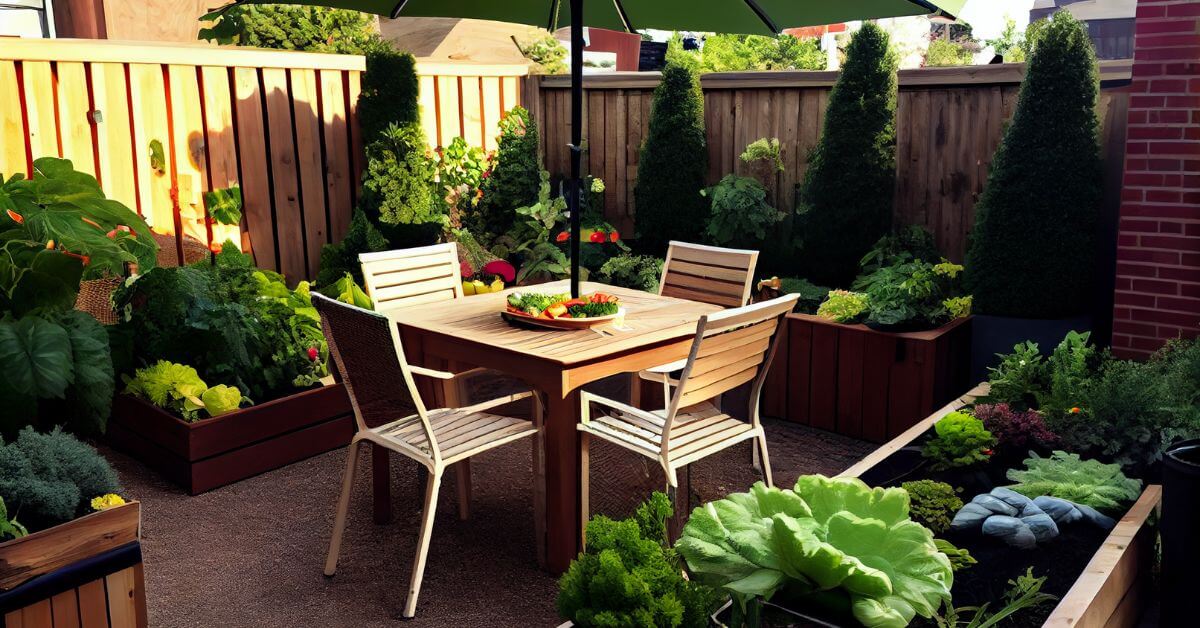
Watering Can or Irrigation
Are you wondering if you should use an irrigation system or just water your plants with a watering can?
Really, it comes down to the amount of space you have to cover and how many raised beds that you have.
The cheapest option is of course the watering can, but the most efficient way would be setting up an irrigation system that will keep the soil humid.
With this type of setup, your plants will get watered automatically and regularly without any extra effort from your side. It also helps prevent over-watering which can be harmful to some types of plants.
On the other hand, if you have only one or a few small beds in your garden then using a watering can or hose may be a more practical solution since it requires less time and money investment than installing an automated irrigation system or drip lines.
It gives you full control over how much water each plant gets at any given time – something that’s not possible when using automatic systems as they tend to apply uniform amounts regardless of individual needs.
Weed Control
Although a raised bed patio garden isn’t that prone to sprouting weeds, it will happen. There will be a few weed seeds in the soil you buy and some can even be blown in by wind or carried with birds.
If you keep an eye on your raised bed regularly, it’s easy to put on some gardening gloves and pull out any weeds that have started growing before they become too big and take over your garden space.
If you do spot any pesky weeds while tending to your plants make sure to pull them up from their roots so they won’t just come back again soon after being removed.
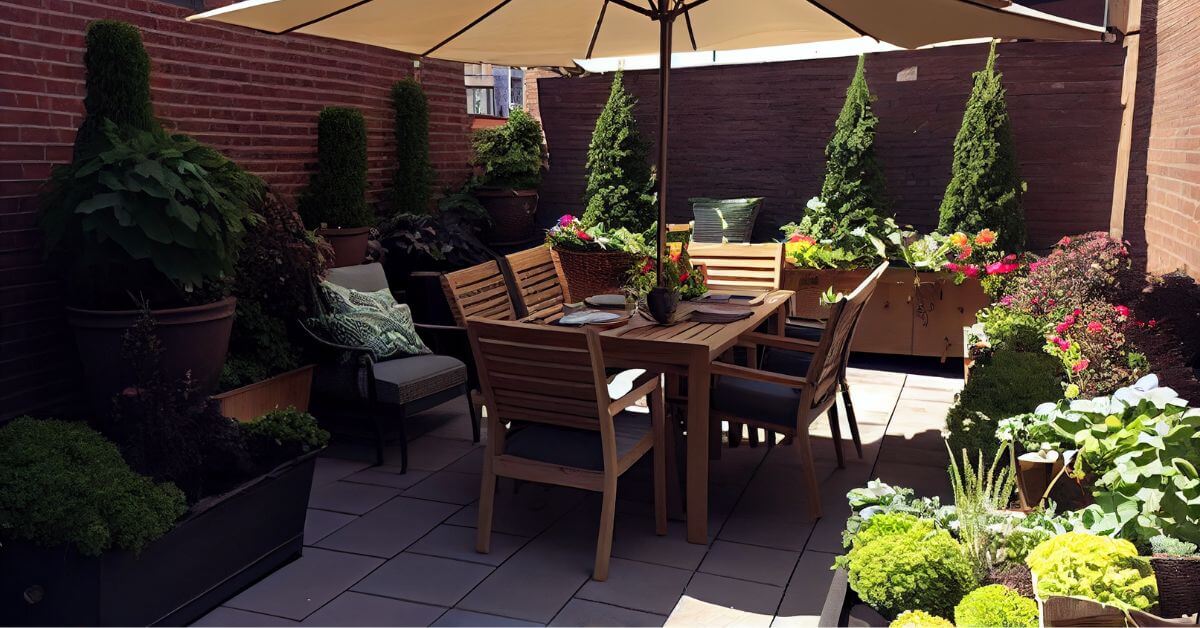
Summary
A raised bed patio garden might be the perfect option for you if you have a little extra space on your patio and want to experience something a little more similar to classic gardening.
They are great because they allow your plants to get plenty of sun and air circulation, while also keeping weeds away from your crops. Plus, since the soil is higher up off the ground it can help with drainage and aeration of roots
However, there are some drawbacks too… such as needing more water than regular gardens due to their increased exposure, but overall, they’re still a great choice for anyone wanting an easy-to-maintain garden space. With just a little bit of work upfront (and a little maintenance afterwards) you’ll have yourself an amazing raised bed patio garden in no time at all!

